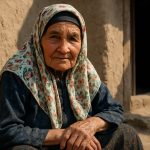Orthodontic Digital Imaging Systems 2025: Revolutionizing Precision & Growth Forecasts to 2030
Unlocking the Future of Orthodontic Digital Imaging Systems in 2025: How Cutting-Edge Technology and Market Expansion Are Transforming Patient Care and Industry Dynamics Executive Summary: Key Insights and 2025 Highlights…
Synthetic Biology Breakthroughs: How Engineered Life Is Reshaping Our World
The Synthetic Biology Revolution: Unleashing Engineered Life to Transform Medicine, Agriculture, and Industry. Discover the Science and Controversies Behind the Next Big Leap in Biotechnology. Introduction: What Is Synthetic Biology?…
Pietism Unveiled: The Spiritual Revolution That Transformed Christianity
Discover Pietism: How a Quiet Movement Sparked a Bold Renewal in Faith and Shaped Modern Christianity Origins and Historical Context of Pietism Core Beliefs and Theological Distinctions Key Figures and…
Khalaj Language: Unveiling a Living Linguistic Relic
The Khalaj Language: Exploring the Enduring Legacy and Unique Features of a Turkic Outlier. Discover How This Rare Tongue Defies Linguistic Expectations. Introduction: The Enigma of Khalaj Historical Origins and…
Iowa Driftless Area: Unraveling the Midwest’s Untouched Geological Marvel (2025)
Inside Iowa’s Driftless Area: Discover the Ancient Landscapes, Unique Biodiversity, and Surprising Future of a Midwest Rarity. Explore Why This Untamed Terrain Captivates Scientists and Adventurers Alike. (2025) Introduction: Defining…
Exoskeleton Robotics for Orthopedic Rehab: 2025 Market Surge & Breakthroughs Forecast
Revolutionizing Orthopedic Rehabilitation: How Exoskeleton Robotics Will Transform Patient Outcomes and Market Dynamics in 2025 and Beyond Executive Summary: 2025 Market at a Glance Key Drivers Accelerating Exoskeleton Adoption in…
2025’s Clinical Islet Isolation Equipment Boom: Next-Gen Innovations & Market Leaders Revealed
Table of Contents Executive Summary: 2025 Outlook & Key Trends Market Size, Growth Forecasts & Revenue Projections (2025–2030) Breakthrough Technologies Transforming Islet Isolation Major Manufacturers and Strategic Partnerships Regulatory Landscape…
Unlocking the Future: High-Throughput Genomic Wheat Hybridization to Revolutionize Crop Yields by 2025
Table of Contents Executive Summary: The 2025 Wheat Hybridization Revolution Market Size & Growth Forecast (2025–2030): Trends and Projections Key Drivers: Global Food Security, Climate Change, and Yield Optimization High-Throughput…
Cryogenic Isotope Recovery Systems: 2025 Breakthroughs & Market Gold Rush Revealed
Table of Contents Executive Summary: 2025 Market Inflection Point Key Drivers: Why Demand for Cryogenic Isotope Recovery Is Surging Technological Innovations: Next-Gen Cryogenic Recovery Methods Competitive Landscape: Leading Players &…
Backward Wave Doppler Imaging Systems: 2025 Breakthroughs That Will Disrupt Medical Imaging Forever
Table of Contents Executive Summary and Key Insights for 2025 Technological Overview: How Backward Wave Doppler Imaging Systems Work Current Market Landscape: Key Players and Regional Hotspots Emerging Applications: Clinical,…



